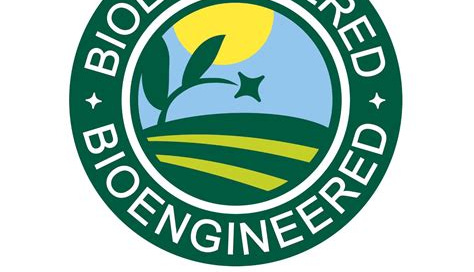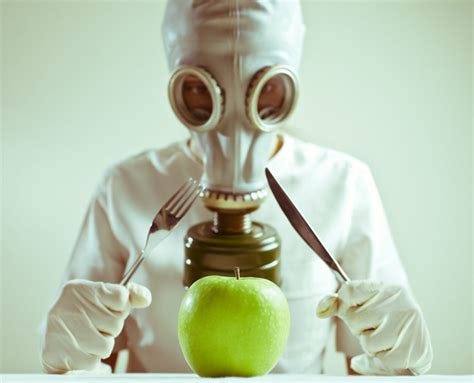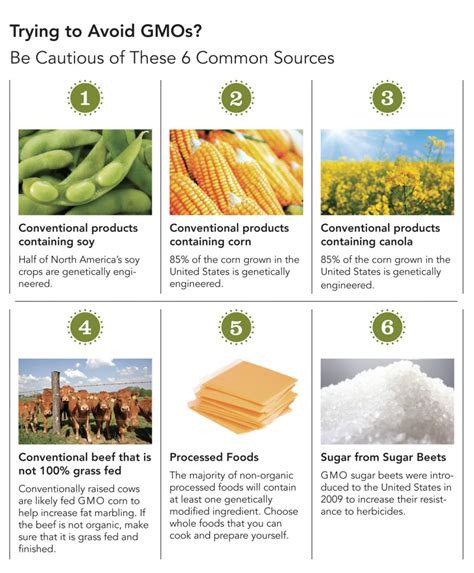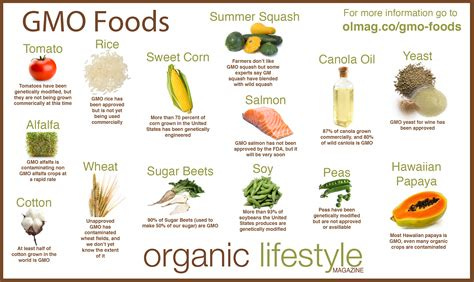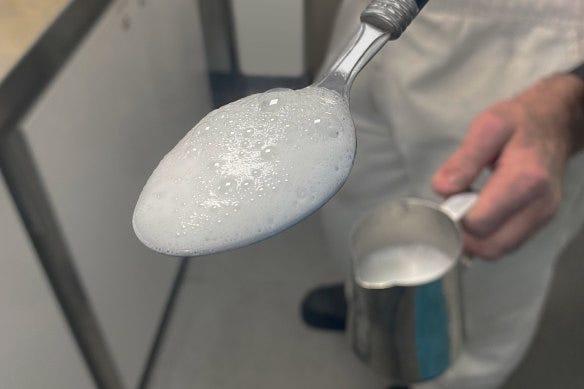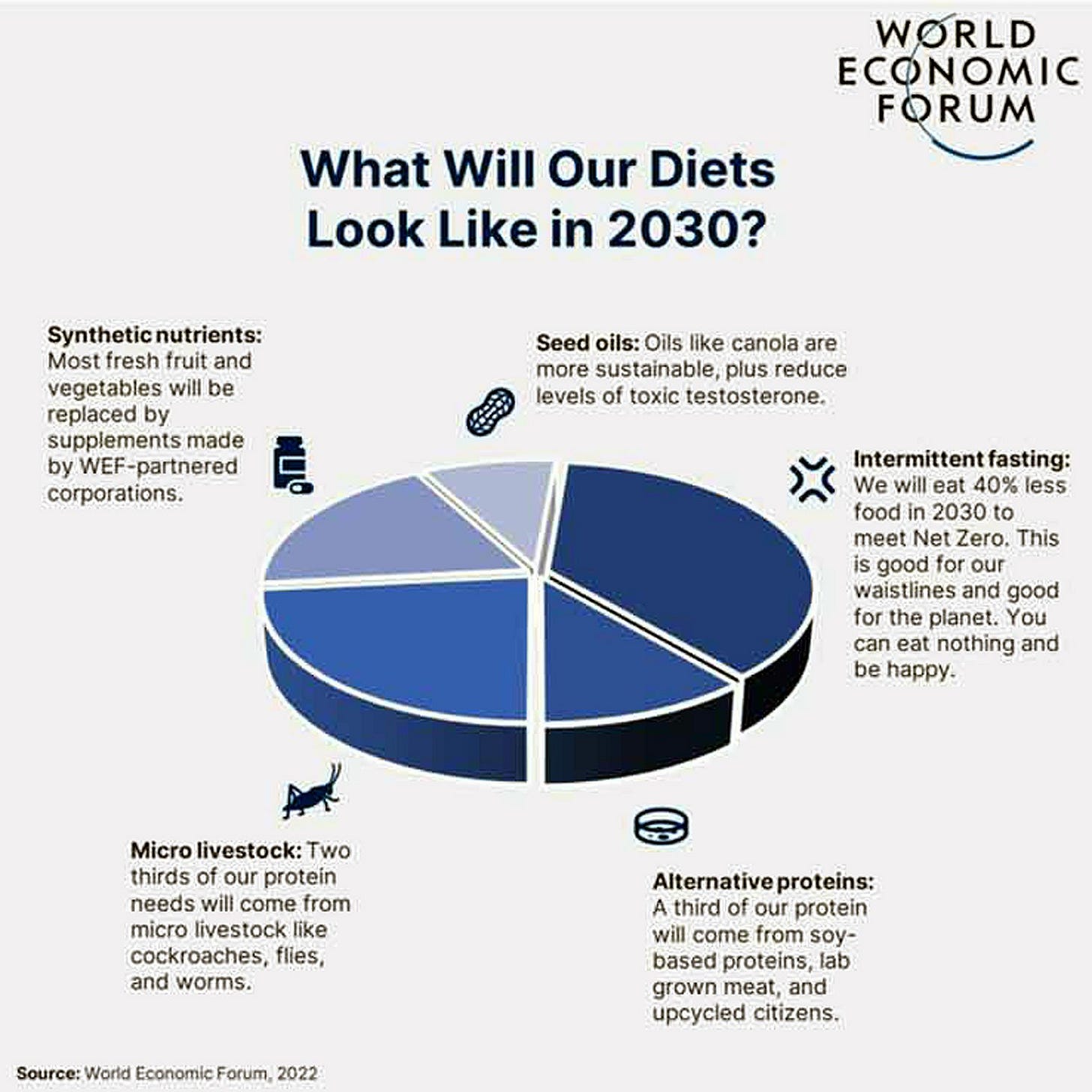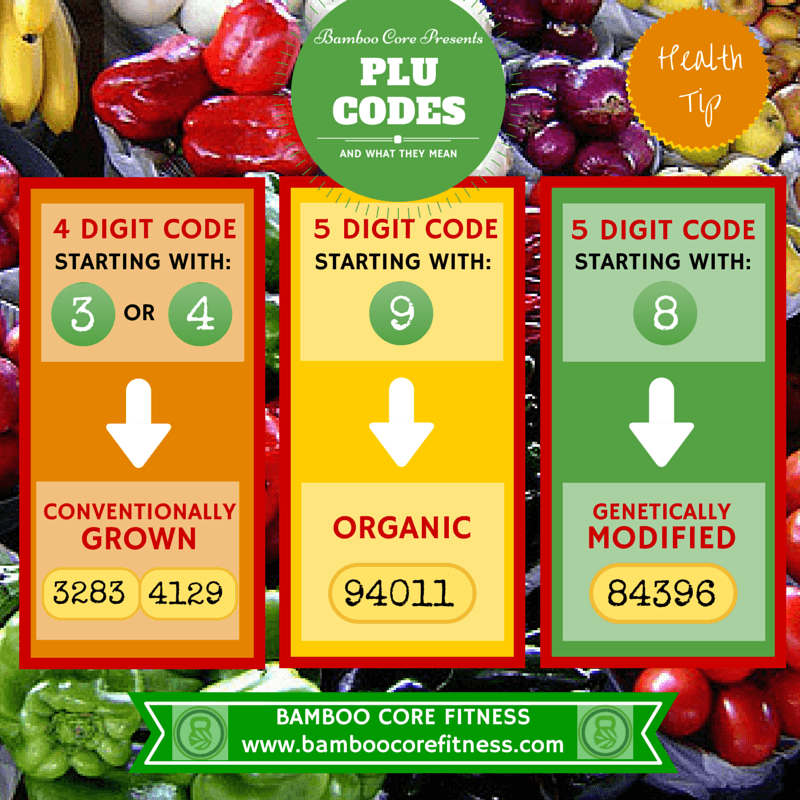Source: DrAxe.com
What Is Bioengineered Food? New Laws, Bioengineered vs. GMO + Risks
As of January 2022, new food labeling laws take effect in the U.S. that replace the term “GMO foods” with “bioengineered food” instead.
Believe it or not, GMO/bioengineered ingredients can be found in more than 75% of processed foods made in the U.S. Some consider these modern food production methods to be a necessary part of how we feed the world in 2022 and beyond — in order to keep up with growing demand as the population continues to climb.
However, organizations, including the Center for Food Safety, believe that each day tens of millions of American infants, children and adults eat genetically engineered foods without their knowledge. New regulations and labeling laws hope to help fix this problem.
So are bioengineered foods harmful or potentially healthy? Let’s find out below.
What Is Bioengineered Food?
The U.S. Department of Agriculture (USDA) defines bioengineered foods as “those that contain detectable genetic material that has been modified through lab techniques and cannot be created through conventional breeding or found in nature.”
In other words, bioengineered foods are made with help from science and technology. Their genetic material is altered in a way that changes how the food is grown, usually to help produce more of the food at a cheaper cost.
Are bioengineered foods the same as GMO foods?
Bioengineered, or “BE” for short, is the federal government’s new way tor refer to genetically modified organisms (GMOs).
While the two terms can mostly be used interchangeably, the new BE labeling laws leave out many products that are made with GMOs (more on this below).
The main difference between the two is this: BE foods must contain detectable genetic material that shows up on tests, but many products made with new GMO techniques are untestable, so they don’t require BE labeling. Essentially, a food can contain small amounts of GMO ingredients, or be made with help from technology, but it still won’t bear a new BE label.
What foods have bioengineered ingredients?
The USDA has created an official “List of Bioengineered Foods.” The list contains 13 items that are considered bioengineered foods/ingredients:
Arctic™ Apple
Canola
Cotton
Some Eggplant
Ringspot Virus-Resistant Papaya
Pink Pineapple
Potato
AquAdvantage® Salmon
Soybean
Summer Squash
Sugarbeet
These bioengineered ingredients are used to make many food products found on store shelves — including those that contain cornstarch, corn syrup, canola oil, high fructose corn syrup, granulated sugar and soybean oil.
You’ll find the new BE label on processed foods and other products, such as:
Sodas/soft drinks
Baked goods
Frozen meals
Non-organic milk made from cows fed genetically modified soy products
Tofu (GMO soy beans)
Dressings made with vegetable oils (canola, soybean, corn, sunflower, safflower)
Cereals
Sweetened juices
Canned soups
Additionally, BE crops are used to make animal feed.
Labeling Laws (USDA Update)
Starting Jan. 1, 2022, “The National Bioengineered Food Disclosure Standard” took effect. It requires food manufacturers, importers and retailers in the U.S. to comply with a new national labeling standard for food that’s been genetically modified.
What’s the goal of the new labeling?
The new BE labeling law is regulated on a federal/national level compared to a state level, which was previously the case with GMO food labeling.
The main goals of the new labeling laws are to “give people more information about what they eat and standardize labels across the country,” as one NPR article explained.
The USDA says, “The updated labeling should increase transparency of our nation’s food system, establishing guidelines for regulated entities on when and how to disclose bioengineered ingredients. This ensures clear information and labeling consistency for consumers about the ingredients in their food.”
How will bioengineered foods be labeled?
Going forward, labels on some foods will say “bioengineered” or “derived from bioengineering.” Manufacturers can also use two BE logos approved by the USDA.
Something controversial about the new BE labeling is that certain foods are exempt from needing to be labeled as bioengineered, even though they do contain some genetically modified ingredients. The USDA has stated that “highly refined ingredients (like some sugars and oils)” do not require labels if the level of genetic material is below the USDA’s detectability threshold.
Exemptions to the new BE labeling include: foods that are, or are primarily made with, meat, poultry or egg products (these must be the first ingredients) or foods that are primarily made with water, broth or stock (again, these must be the first ingredient listed).
Very small food manufacturers with sales below $2.5 million per year also don’t need to label their food as bioengineered.
Aside from foods having BE labeling, packages can include QR codes for consumers to scan so they can learn more about the products. There is also a phone number listed on some bioengineered foods for consumers to text if they want to be provided with more information about that food.
Risks and Side Effects
Is it safe to eat bioengineered food? From a health standpoint, bioengineered foods are not very different than GMO foods, which are still controversial.
According to the National Academy of Sciences, the U.S. Food and Drug Administration and the World Health Organization, there’s no solid evidence that genetically modified/bioengineered crops are harmful to human health, although not every organization agrees, including the Non-GMO Project and Center for Food Safety.
The Non-GMO Project created the product verification program to help educate consumers about the risks of consuming GMO foods, for both their health and the environment, and to help preserve and build a non-GMO food supply.
For example, the Non-GMO Project explains: “Planting vast areas with just a few crops erodes biodiversity, while the chemical pesticides that go hand in hand with GMOs damage soil health. Agriculture that relies on GMOs is a losing proposition.”
The Center for Food Safety states, “Genetically engineered foods are different from other foods. Genetic engineering allows, for the first time, foreign genes, bacterial and viral vectors, viral promoters and antibiotic marker systems to be engineered into food.”
While it has not been proven in all studies, there’s potential that genetically engineered foods may contribute to health problems such as:
allergies
immuno-suppression
loss of nutrients
Are There Any Benefits?
Are bioengineered food ingredients healthy? In most cases, no. The majority of genetically modified/bioengineered foods are highly refined and processed, meaning they are low in nutrients but may be high in calories.
There are not added health benefits to consuming these foods or ingredients. In other words, technology has not made them healthier foods.
However, they can be appealing because they are typically inexpensive, and they are widely available.
One benefit of the new BE labeling law is that it keeps consumers better informed about what they are buying and eating.
The new labeling is also intended to have “the interest of minimizing costs for producers” in mind. As one article published by Piedmont puts it, “GMOs have been in our food supply for more than 20 years. They are made by scientists who have genetically introduced new traits or characteristics to an organism, allowing it to grow faster, look better, taste sweeter and resist herbicides, etc.”
How to Avoid Them
When grocery shopping, check for new bioengineered labels. The USDA offers two official labels for BE products that contain circular green images with two different sets of text: either “bioengineered” or “derived from bioengineering.” You’re most likely to see these labels on products made with corn, soy, canola oil and sugar, such as some cereals, frozen foods, dressings, etc.
The Non-GMO Project has created its own label known as “the Butterfly” that ensures a food does not contain GMOs or bioengineered ingredients. You can look for the Butterfly label on foods if you want to be sure the food is GMO-free.
The organization has stated: “Bioengineered Food labeling law is ineffective at finding GMOs and avoiding GMOs, largely because of restrictions, loopholes and exemptions. Too much falls outside of the law’s purview for it to be effective. That’s why the Butterfly remains the most rigorous, transparent and trustworthy label for GMO avoidance.”
Here are steps you can take to avoid bioengineered/GMO foods:
Buy food that is labeled 100 percent organic.
Purchase products with the Butterfly/non-GMO label.
Opt for unprocessed, whole foods that contain minimal ingredients (or only one).
Purchase grass-fed beef and organic dairy products.
Shop at local farmers markets, and purchase more food from small producers.
Conclusion
What is bioengineered food? The USDA defines it as foods that contain detectable genetic material that has been modified through lab techniques and cannot be created through conventional breeding or found in nature.
Bioengineered food ingredients include corn, canola, soybeans, sugarbeets and some others. These are found in many processed and refined foods.
Food producers are now required to use two logos approved by the USDA to label bioengineered food under the new national standard that took effect on Jan. 1, 2022. These labels will replace GMO labeling in most cases.
While it hasn’t been proven that GMO/bioengineered foods are harmful, they are mostly highly processed products that are lacking nutrients in most cases.
Source: USDA
List of Bioengineered Foods
The Agricultural Marketing Service (AMS) developed the List of Bioengineered Foods to identify the crops or foods that are available in a bioengineered form throughout the world and for which regulated entities must maintain records. These records will inform regulated entities about whether they must make a bioengineered food disclosure. The list includes any BE crops or foods that are to capture any BE crops or foods that are currently in legal production somewhere in the world. New BE products continue to be developed. Even if a food is not included on the List, regulated entities whose records show that a food they are selling is bioengineered must make appropriate disclosure of that food. AMS will review the List annually and, if necessary, make updates through the federal rulemaking process.
Source: New Atlas
Genetically modified purple tomato approved by US regulators
By Rich Haridy
After more than a decade of development a nutritionally enhanced purple tomato has been deemed safe to grow by the United States Department of Agriculture (USDA). The tomatoes have been gene edited to produce 10 times more antioxidants than pre-existing varieties.
Back in 2008 a fascinating study was published in the journal Nature Biotechnology. The research reported on a type of tomato that had been gene edited to produce high volumes of antioxidants called anthocyanins.
Anthocyanins are naturally found in plenty of foods, such as blueberries and red cabbage. They are responsible for the purple pigment in those foods and have been linked to a variety of health benefits, including reduced risk of heart disease and diabetes.
Some types of tomato with naturally purple skins do contain low levels of anthocyanins but some food scientists wondered if those levels could be increased with a few genetic tweaks. Two genes were taken from another plant (the snapdragon) and added to a type of purple tomato. The genes amplified the plant's ability to produce anthocyanins, resulting in a unique tomato with richly purple-colored flesh.
The 2008 study reported testing the health effects of this anthocyanin-boosted tomato on mice engineered to develop cancer. The mice fed a diet supplemented with the purple tomatoes were found to live 30% longer than mice fed a regular diet.
"This is one of the first examples of metabolic engineering that offers the potential to promote health through diet by reducing the impact of chronic disease," said plant biologist Cathie Martin in 2008. "And certainly the first example of a GMO [genetically modified organism] with a trait that really offers a potential benefit for all consumers.”
After a long time spent navigating regulatory processes, the genetically modified purple tomato is now one step closer to the market following a tick of approval by the USDA’s Animal and Plant Health Inspection Service (APHIS). This authorization means the genetically modified plant is no longer regulated with strict controls limiting where and how it can be grown. It can be safely grown anywhere in the United States like any other allowable crop.
“When Cathie and I founded NPS [Norwich Plant Sciences] nearly 15 years ago to bring to market health-promoting, genetically enhanced purple tomatoes, invented in the UK, we never thought it would take so long to obtain regulatory approval,” said Jonathan Jones, who has been working with Martin on commercializing the plant for more than a decade. “This is a red-letter day for crop improvement, with approval of a beneficial product by USDA, after careful scrutiny of a detailed information dossier that describes its properties.”
Over the last few years a number of uses for the enhanced tomato have been explored. The scientists initially have been focusing on producing an anthocyanin-rich tomato juice that could be tested in clinical contexts for patients with cancer or cardiovascular disease.
However, that kind of product still faces plenty more testing and regulatory hurdles before reaching the market. So the first step for Martin and Jones will be selling the seeds for these purple tomatoes to home growers.
The US approval marks the first place in the world to allow the genetically modified product to be grown. Martin and Jones hope the tomatoes will be approved in the United Kingdom soon.
“We are now one step closer to my dream of sharing healthy purple tomatoes with the many people excited to eat them,” Martin said. “The bittersweet thing is that the tomatoes will be on sale in America and not the UK as well. But the plus side is that by focusing on home growers we will be consumer oriented, and we will be able to get feedback and interest needed to develop other products.”
Don’t eat zee bugz
Insects loaded with parasites! Why eating insects is bad news in 2022
The experimental material comprised samples of live insects (imagines) from 300 household farms and pet stores, including 75 mealworm farms, 75 house cricket farms, 75 Madagascar hissing cockroach farms and 75 migrating locust farms. Parasites were detected in 244 (81.33%) out of 300 (100%) examined insect farms. In 206 (68.67%) of the cases, the identified parasites were pathogenic for insects only; in 106 (35.33%) cases, parasites were potentially parasitic for animals; and in 91 (30.33%) cases, parasites were potentially pathogenic for humans. Edible insects are an underestimated reservoir of human and animal parasites.
Our research indicates the important role of these insects in the epidemiology of parasites pathogenic to vertebrates. Conducted parasitological examination suggests that edible insects may be the most important parasite vector for domestic insectivorous animals. According to our studies the future research should focus on the need for constant monitoring of studied insect farms for pathogens, thus increasing food and feed safety.
There is also significant uncertainty about whether chitin, a substance that is an essential part of the exoskeleton of many insects, is edible and whether consumption could be implicated in the a variety of harmful conditions, from auto-immune responses to cancer.
A parasitological evaluation of edible insects and their role in the transmission of parasitic diseases to humans and animals
Abstract
From 1 January 2018 came into force Regulation (EU) 2015/2238 of the European Parliament and of the Council of 25 November 2015, introducing the concept of "novel foods", including insects and their parts. One of the most commonly used species of insects are: mealworms (Tenebrio molitor), house crickets (Acheta domesticus), cockroaches (Blattodea) and migratory locusts (Locusta migrans). In this context, the unfathomable issue is the role of edible insects in transmitting parasitic diseases that can cause significant losses in their breeding and may pose a threat to humans and animals. The aim of this study was to identify and evaluate the developmental forms of parasites colonizing edible insects in household farms and pet stores in Central Europe and to determine the potential risk of parasitic infections for humans and animals. The experimental material comprised samples of live insects (imagines) from 300 household farms and pet stores, including 75 mealworm farms, 75 house cricket farms, 75 Madagascar hissing cockroach farms and 75 migrating locust farms. Parasites were detected in 244 (81.33%) out of 300 (100%) examined insect farms. In 206 (68.67%) of the cases, the identified parasites were pathogenic for insects only; in 106 (35.33%) cases, parasites were potentially parasitic for animals; and in 91 (30.33%) cases, parasites were potentially pathogenic for humans. Edible insects are an underestimated reservoir of human and animal parasites. Our research indicates the important role of these insects in the epidemiology of parasites pathogenic to vertebrates. Conducted parasitological examination suggests that edible insects may be the most important parasite vector for domestic insectivorous animals. According to our studies the future research should focus on the need for constant monitoring of studied insect farms for pathogens, thus increasing food and feed safety.
Lab-grown milk to hit shelves by 2024 – minus the cow and the carbon
The process involves inserting synthetic cow DNA into yeast to form a protein known as a casein micelle, the “essential building block” for cow’s milk. These proteins are then brewed, filtered and dried ready to be rehydrated and turned into animal-free dairy products.
Why Promoters of Great Reset Are Pushing Ultra-Processed Foods
Story at-a-glance:
According to promoters of The Great Reset, a traditional whole food diet is not only “unsustainable” but “environmentally destructive” and must be replaced with GMOs and protein alternatives made from insects, plants and synthetic biology. Life on earth cannot be sustained, they say, unless we transition to what amounts to an ultra-processed and highly unnatural diet.
A scientific review throws The Great Reset’s talking points in the proverbial trash, as ultra-processed foods are “fundamentally unsustainable” and nutritionally nonessential. As such, the environmental impacts of ultra-processed foods are indefensible, as they are wholly avoidable.
Ultra-processed foods account for 17% to 39% of total diet-related energy use; 36% to 45% of total diet-related biodiversity loss; up to one-third of total diet-related greenhouse gas emissions, land use and food waste; and up to one-quarter of total diet-related water-use among adults in high-income countries.
The EAT Forum, cofounded by the Wellcome Trust and the Stockholm Resilience Centre in 2014, has developed a “Planetary Health Diet,” intended to be applied to the entire global population. It entails cutting meat and dairy intake by up to 90%, and working with biotech and fake meat companies to replace whole foods with lab-created alternatives — all in the name of climate change prevention and “sustainability.”
Once corporations have a monopoly on meat, dairy, cereals and oils, they will be the ones profiting from and controlling the food supply. The companies that control the food supply will also end up controlling countries and entire populations.
Man spraying glyphosate (Round-Up). Ask yourself, if he is wearing all the PPE, do you really think it is safe for consumption?
Ways to connect
Telegram: @JoelWalbert
Email: thetruthaddict@tutanota.com
The Truth Addict Telegram channel (mostly news aggregation, no login needed)
Hard Truth Soldier chat on Telegram (login needed)
Mastodon: @joel_walbert@noc.social
Session: 05e7fa1d9e7dcae8512eed0702531272de14a7f1e392591432551a336feb48357c
Odysee: TruthAddict
Donations (#Value4Value)
Bitcoin:
bc1q5jhxnkxqpc45veqd9czf2ys3th6y4ne6a96j3h (on chain)
bc1q6l4rezjv4p6vzmwmf7fkx9j5dtj3trzl3hqe048sd80su77jwq9scsy3jq (lightning)
Monero:
43E8i7Pzv1APDJJPEuNnQAV914RqzbNae15UKKurntVhbeTznmXr1P3GYzK9mMDnVR8C1fd8VRbzEf1iYuL3La3q7pcNmeN

